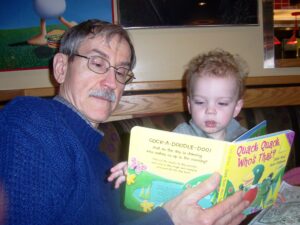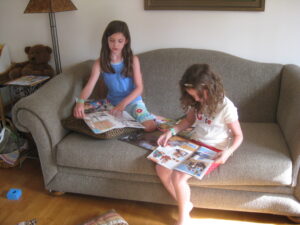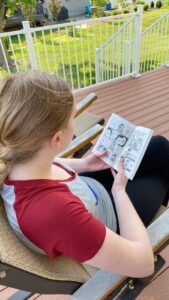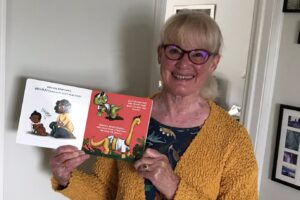Have you met adults who somehow believe that writing a picture book is EASY because there are so FEW WORDS?
Arrrrgh!
As children’s writers, we know that the fewer words, the more perfect each word has to be. No room for dangling participles or near rhymes or even a well-placed semicolon. Just every single word is chosen to be the very best possible one for that thought, that sentence, that page.
Wander through the library or bookstore “Picture Books” and you realize that “books with pictures” are not all alike in format, reading level, or subject matter. How many of those perfect words make a book?
Board books for birth to age 3 – Under 200 words
These fat little books are 8-12 spreads (16-24 pages) and a new manuscript should be under 200 words. The best ones tell a story with a beginning, middle, and end, even if they are introducing a concept. NOTE: Board books with more than 200 words were often originally published as picture books, shrunk in format, and better for an older audience.

Early Picture books for ages 2-5 – 200-500 words
Early picture books are those most likely to be read at library story time. They have a simple-to-follow storyline, often with rhyming words, interactive text, and large clear pictures.
Picture books for ages 3-7 – 500-800 words
These are for kids who are not quite reading on their own yet but want more of a story perhaps with wordplay, multiple characters, and subjects that are more complex. There may be smaller detailed pictures and more pages full of text.

Older Picture books for ages 4-8 – 6000 to 1000 words
Many nonfiction picture books and children’s biographies fit in this group with the pictures supporting the text. Fiction books can include longer folk and fairy tales, several different characters, and social and moral issues.
Beginning readers for ages 6-8 – 1500-2000 words
These are complete stories on fiction and nonfiction subjects of interest to early-grade school students. Vocabulary may be limited to a limited list of sight words and ones that are easy to phonetically decode. Pictures give clues to unknown words or supplement the story.
Hi/Lo books for dyslexic and reluctant middle school readers – 400-1200 words
Age-appropriate fiction and nonfiction subject matter is the important factor in these books as students are apt to be older and no longer a fan of beginning readers. Pictures need to be as exciting as the writing to encourage the student to decode the words to find out more.

Graphic Novels -Next Month!
The other huge and growing picture/word book section is comic books/graphic novels. This genre has boggled the Library of Congress and the Dewey Decimal classifiers since they are both a unique format, fiction, and nonfiction topics, for multiple ages. That dilemma we’ll leave for next month!

Multi-award-winning author Robin Currie learned story sharing by sitting on the floor, in library story times. She has sold 1.7 M copies of her 40 storybooks and writes stories to read and read again. Robin is pleased to report that How to Dress a Dinosaur has only 181 words and is a perfect fit for the board book area.



No Comments